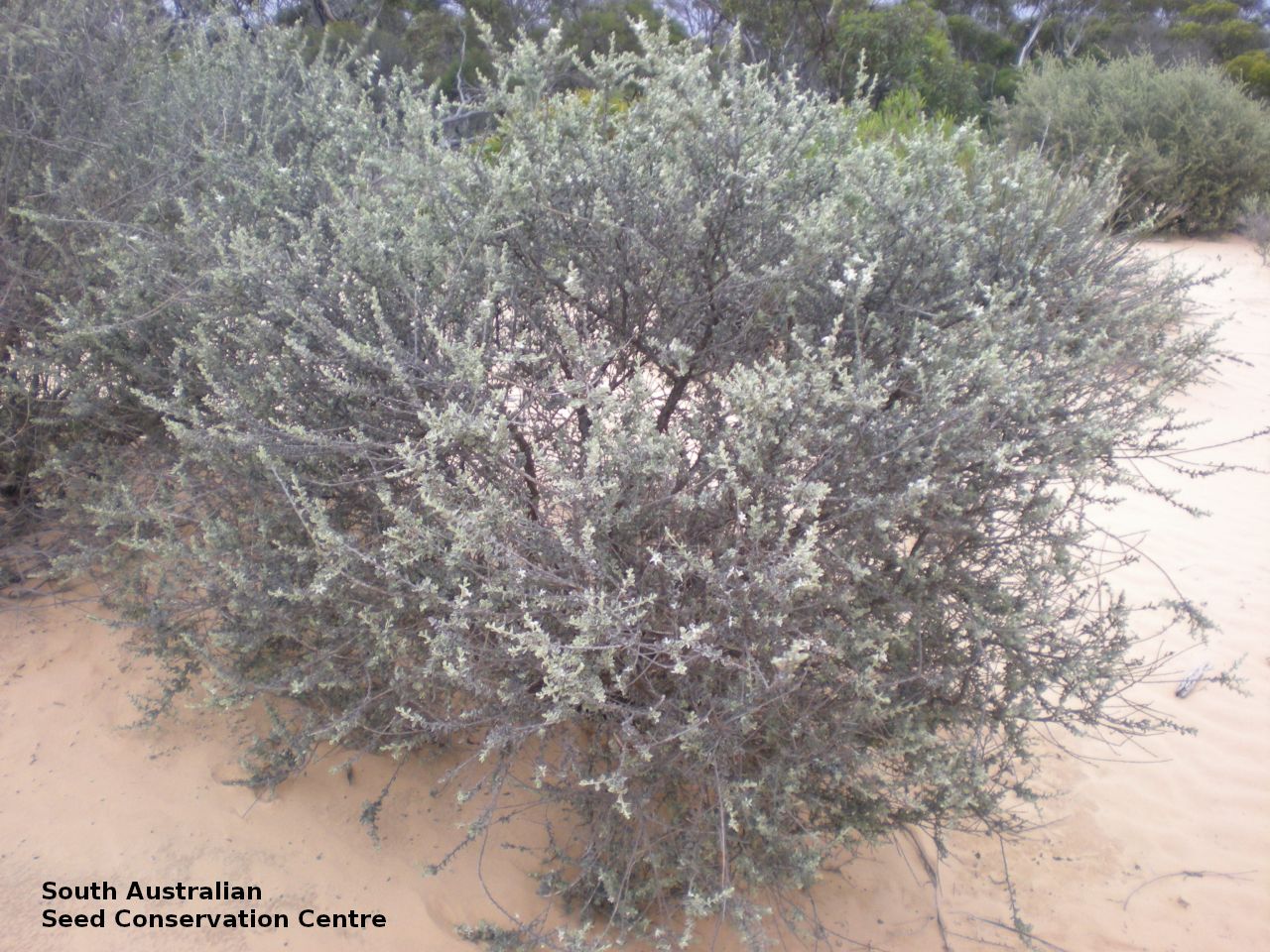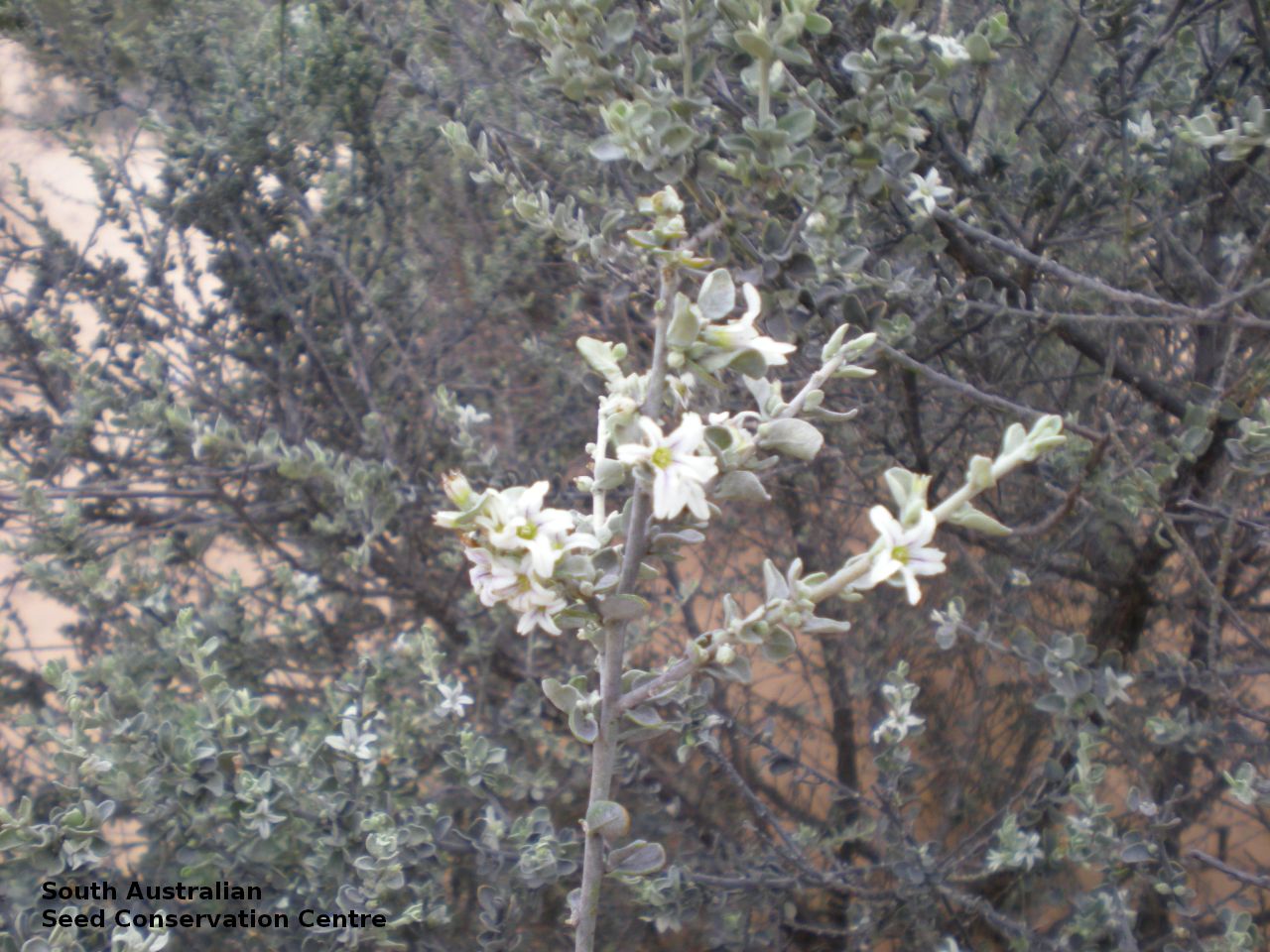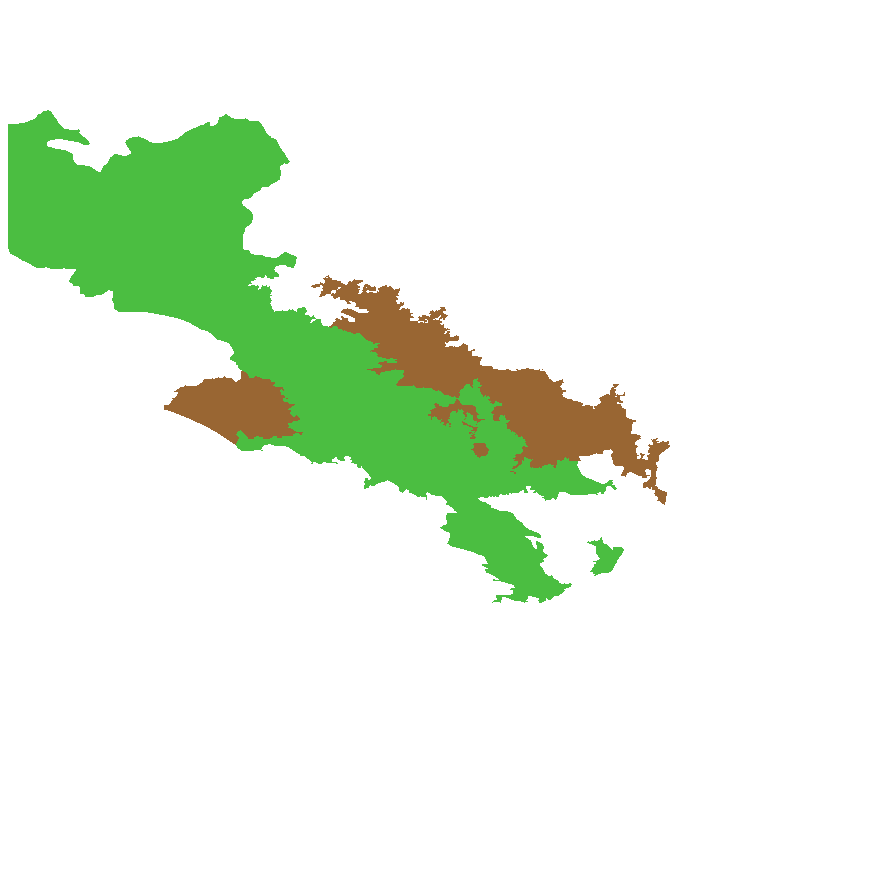



Botanical art
Prior names
Anthotroche truncata
Etymology
Grammosolen from the Greek 'gramme' meaning a line or stroke of a pen and 'solen' meaning a pipe; alluding to the striated corolla tube. Truncatus from Latin meaning abruptly cut off; unsure of what this is referring to.
Distribution and status
Found on the Eyre Peninsula, northwest to the Gairdner-Torrens Basin and Nullarbor in South Australia, growing on deep sandy soils, commonly on sand dunes or localised sandy rises; usually on burnt or disturbed sites in mallee. Also found in Western Australia. Native. Common in South Australia. Rare in Western Australia.
Herbarium regions: North Western, Nullarbor, Gairdner-Torrens, Eyre Peninsula
NRM regions: Alinytjara Wilurara, Eyre Peninsula, South Australian Arid Lands
AVH map: SA distribution map (external link)
Plant description
Erect shrub to 2 m, covered in greyish hairs. Leaves mostly spreading, not overlapping or obscuring the axis; ovate to elliptic, to 18 mm long and 11 mm wide, densely hair, with a flat or slightly recurved margin. Inflorescence in leafy clusters with 1–3 dull-white flowers with purple striations in the throat . Flowering mainly between August and September. Fruits are brown globular capsule to 4.5 mm diameter. Seed embryo type is linear fully developed.
Seed collection and propagation
Collect seeds between October and November. Collect capsules that are maturing, fat, turning a straw colour and contain hard brown seeds inside. Monitor the plants as the capsules will dry, split and disperse the seeds in a short space of time. Place the capsules in a tray and leave to dry for one to two weeks. Then rub the capsules gently by hand or with a rubber bung to dislodge the seeds. Use a sieve to separate the unwanted material. Store the seeds with a desiccant such as dried silica beads or dry rice, in an air tight container in a cool and dry place.
| Location | No. of seeds (weight grams) | Number of plants | Date collected | Collection number Collection location | Date stored | % Viability | Storage temperature |
|---|---|---|---|---|---|---|---|
| BGA MSB | 1,400 (1.1 g) 1,400 (1.1 g) | 50 | 5-Dec-2005 | DJD283 Eyre Peninsula | 8-Aug-2006 | 20% | -18°C |
Number of plants: This is the number of plants from which the seeds were collected.
Collection location: The Herbarium of South Australia's region name.
% Viability: Percentage of filled healthy seeds determined by a cut test or x-ray.